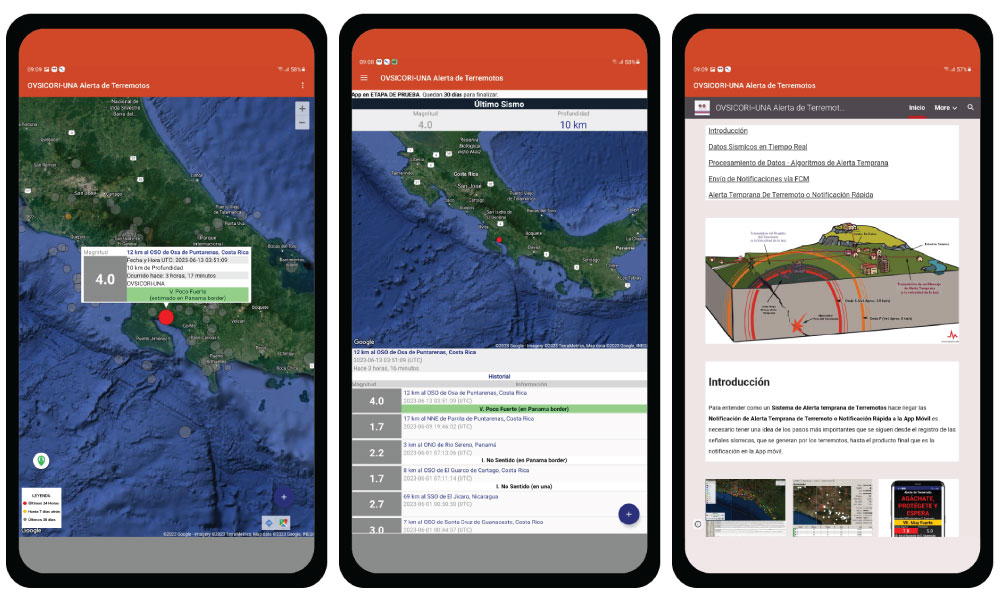2023-06-21
Public earthquake early warning app launched in Costa Rica
Earthquakes are the deadliest natural hazard in Central America, both due to their direct impact and as a cause of possibly devastating tsunamis. Since 2016, researchers at the SED have been working with partners in Central America to build Earthquake Early Warning systems across the region through the “Alerta Temprana de Terremotos en America Central” (ATTAC) project, funded by the Swiss Agency for Development and Cooperation. Last week, a major milestone was reached – the Volcanological and Seismological Observatory (OVSICORI) at the National University in Costa Rica announced the public launch of a smartphone app that can deliver earthquake early warnings across Costa Rica.
Read more...Early earthquake warning system
Potentially damaging seismic waves travel at speeds of two to three kilometres per second, very fast but much slower than information, which travels at the speed of light. Modern seismic networks can detect an ongoing earthquake within a few seconds and issue a warning that can overtake the earthquake waves and provide seconds of warning in advance of strong shaking to areas at some distance from the epicentre. This allows individuals receiving the alert to take immediate action to protect themselves or to initiate automated actions to protect machinery. To successfully operate an earthquake early warning system requires a dense network of high-quality and low-latency seismic stations and dedicated software that can process in real-time the information and issue a warning. The two open-source data processing algorithms used now in Costa Rica are the Virtual Seismologist and FinDer. Both have been developed and optimised at SED over the past ten years. They are also being used by other national earthquake monitoring agencies in Central America: INETER in Nicaragua, MARN in El Salvador, and INSIVUMEH in Guatemala.
A key element of an earthquake early warning system is the ability to deliver warnings to users instantly. Within the ATTAC project, a dedicated smartphone app was developed. It is currently only available on Android phones, the most common smartphone in Central America. The app also provides safety recommendations – in Costa Rica, this is to ‘Duck, Cover and Hold’ – and allows users to report the intensity of ground motions they actually felt.
Further developments
Although now publicly released, the app will continue to be developed further as experiences are gained on how to operate and optimise the performance as the number of users increases on the national scale. Planned improvements before the end of the project in mid-2024 include support for other phone types and translation into indigenous languages. Other partners will probably also announce their own public early warning systems before the project ends.
In Switzerland, earthquake early warning is also considered as a means to reduce earthquake risk. The SED is currently internally testing a prototype system. However, in Switzerland, strong earthquakes occur much less frequently, and for a typical magnitude 6 earthquake, most damage will occur within 10-15 kilometres of the event, inside the so-called blind zone. This is limiting the usefulness of the early warning system when compared to Central America. Nevertheless, the experiences gained in ATTAC will provide valuable input to develop an earthquake early warning system for Switzerland.
